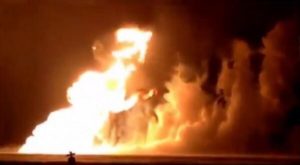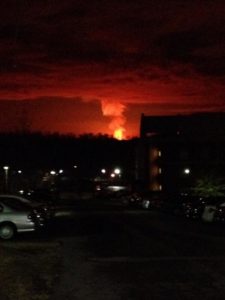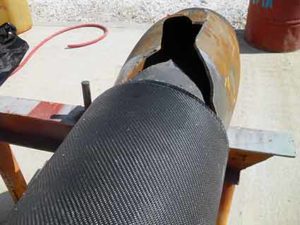Gas Pipeline Explosions Amid Freezing Temperatures
â€

Keeping Pipelines Safe: Preventing Explosions for a Secure Future
Pipeline explosions are becoming an increasingly serious issue, often resulting in injuries, property damage, service disruptions, and even loss of life. According to the National Transportation Safety Board (NTSB), two main causes of natural gas pipeline explosions are mechanical failure and high-pressure ruptures. As Richard Peekema explains, leaks from weld cracks or corrosion can allow gas to build up in surrounding areas, creating a dangerous explosion risk. While these issues can lead to powerful explosions, they are largely preventable with proper maintenance and reinforcement. By addressing weaknesses early, pipeline operators can ensure safety and reliability.
This winter has brought extreme cold to millions across the U.S. and Canada, making heating a top priority. When gas outages occur, it becomes a real challenge. Earlier this year, a pipeline operated by TransCanada Corp exploded in Canada, sending flames over 600 feet into the air and burning for more than 12 hours. The incident cut off natural gas supply to 4,000 homes and businesses, and the outage lasted three days. During a severe blizzard with temperatures as low as -20°F, many people were left without heat, highlighting the critical need for reliable energy infrastructure. Such events can also cause damage to adjacent pipelines, compounding the risks.
In Kentucky, a gas pipeline explosion on February 13, 2014, caused widespread destruction. The pipeline, managed by Columbia Gulf Transmission and buried 20 feet underground, connects the Gulf of Mexico to New York and links to most major pipeline systems in the Gulf Coast region. The blast created a nearly 60-foot-deep crater, sent rocks flying over 150 feet away, and sparked a fire visible from 25 miles away. It destroyed two homes, damaged three others, scorched four vehicles, and ignited two barns. Several people were hospitalized, while others suffered burns. Although the exact cause remains unclear, it likely involved one of the previously mentioned factors. Many such incidents could have been prevented using advanced solutions like HJ3's CarbonSeal carbon fiber reinforcement system.
HJ3’s CarbonSeal is a globally recognized solution for reinforcing and repairing gas and oil pipelines. Used in cities like Boston, Alaska, California, Texas, as well as in Turkey and Mexico, this system enhances pipeline strength, allowing them to withstand high pressure while offering cost-effective maintenance. Recently, HJ3’s CarbonSeal system passed rigorous burst testing, earning approval for all PEMEX pipeline repairs. It can handle pressures up to 5200 PSI—far exceeding the typical operating range of 200 to 1,500 PSI for most gas pipelines. If you're responsible for managing a pipeline or concerned about its safety, consider exploring HJ3’s innovative reinforcement solutions. Contact our project managers to learn more and take a proactive step toward safer, more reliable infrastructure.
â€

â€

â€
Pearl Film Packaging Machine ,Cling Film Wrapping Machine,Shrink Film Packaging Machine,Stretch Film Packing Machine
Wenzhou Huaze Machinery Co.,Ltd , https://www.multihz.com
